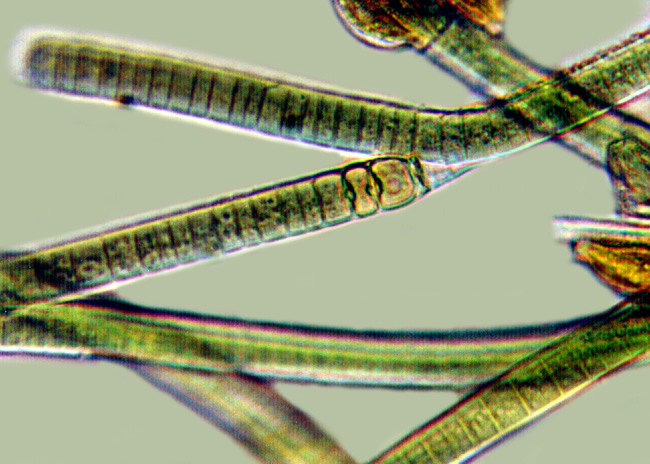Novel Orange Carotenoid Proteins Shed Light on Evolution of Cyanobacteria Photoprotection
07/10/2017

Filamentous blue-green algae [Courtesy Landcare Research. Reused under a Creative Commons license (CC By 4.0, https://creativecommons.org/licenses/by/4.0/).]
The Summary
Research has identified and characterized a new, functionally distinct member of the orange carotenoid protein (OCP) family. The OCP complex enables chromatically acclimating blue-green algae to avoid cellular damage and growth inhibition in conditions of high light or nutrient stress. In a recent bioinformatic analysis of all available cyanobacterial genomes, scientists found that many of these ecophysiologically diverse organisms encode more than one copy of the full-length OCP.
The study’s focus was the filamentous blue-green algae Tolypothrix, which encodes two OCPs. One copy was determined to be functionally equivalent to the well-characterized OCP of Synechocystis cyanobacteria, dubbed OCP1. But the second, OCP2, was distinct in several key aspects. The researchers hypothesize that OCP2 and another bioinformatically identified protein, OCPx, reflect intermediate stages in the evolution of photoprotection in cyanobacteria.
Instruments and Facilities
X-ray macromolecular crystallography and diffraction was conducted at the Advanced Light Source at Lawrence Berkeley National Laboratory.
Funding
Work was supported by the National Science Foundation (NSF; IOS 1557324). The Advanced Light Source is supported by the Office of Basic Energy Sciences (OBES), U.S. Department of Energy (DOE) Office of Science, under Contract No. DE-AC02-05CH11231.
Related Links
- BER Resource: Structurally Integrated Biology for the Life Sciences
- Feature Story: Novel orange carotenoid proteins shed light on evolution of cyanobacteria photoprotection
References
Bao, H., et al. “Additional Families of Orange Carotenoid Proteins in the Photoprotective System of Cyanobacteria.” Nature Plants 3, Article 17089 (2017). [DOI:10.1038/nplants.2017.89]
